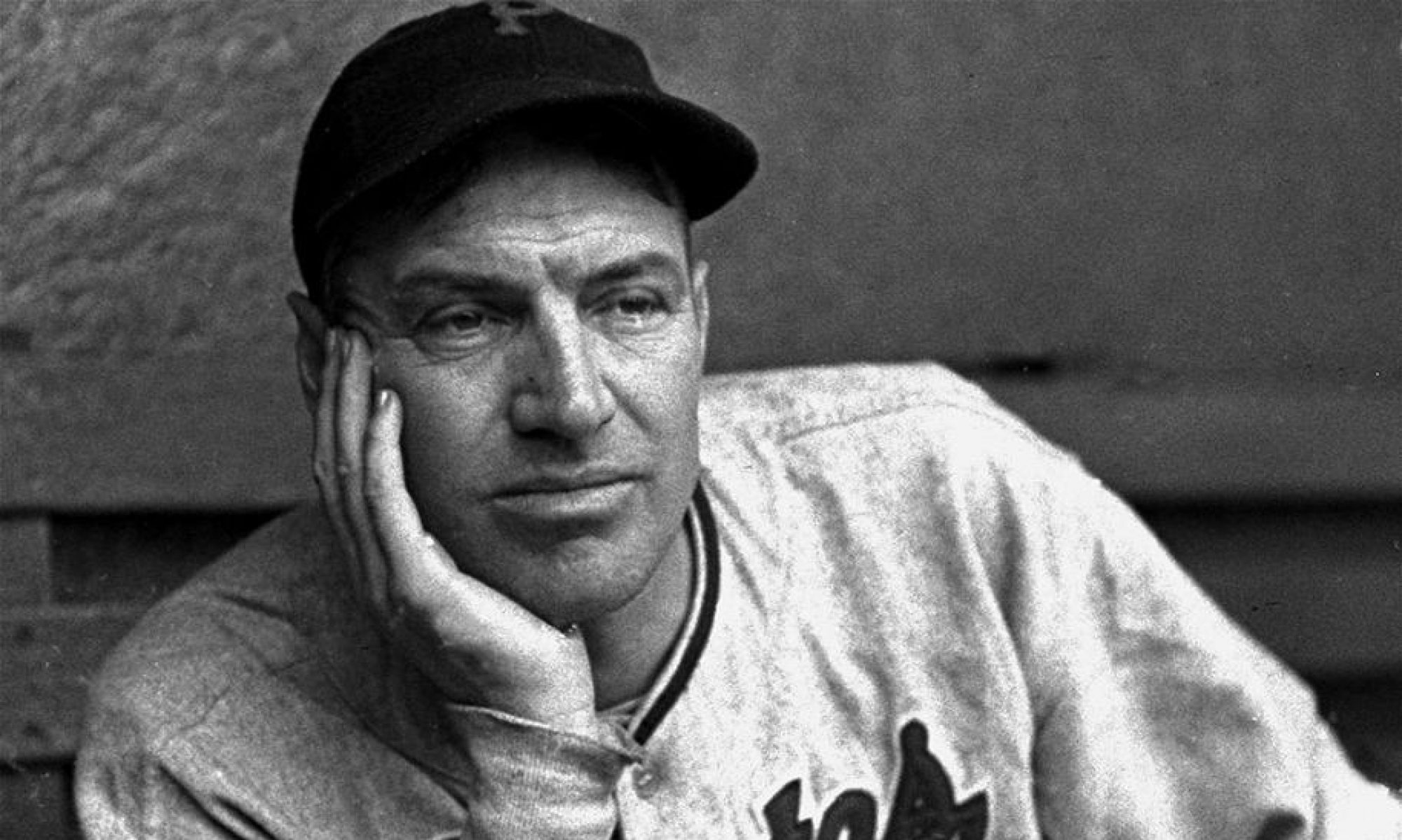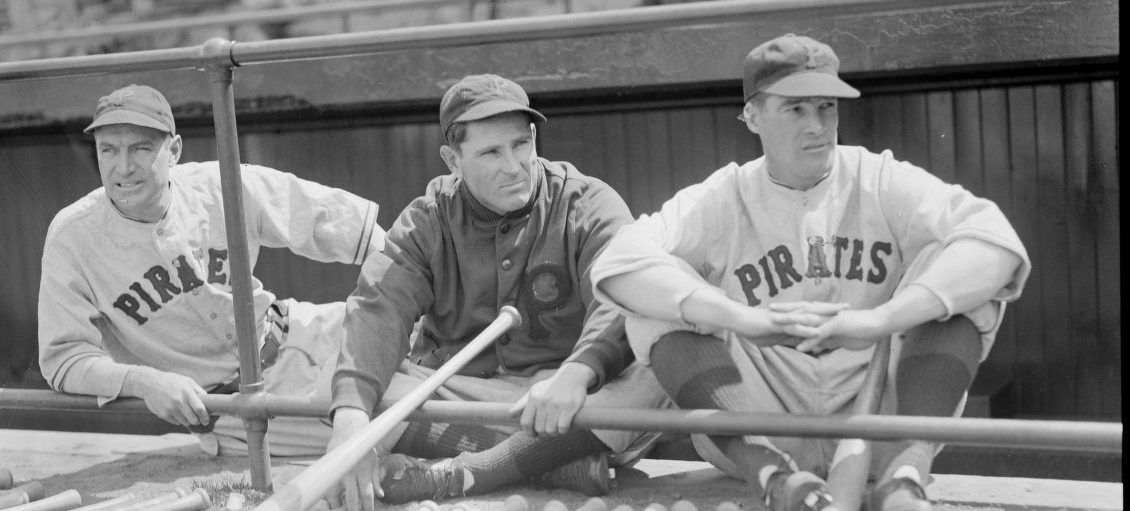Considered one of the best third basemen of all time, Harold “Pie” Traynor’s lightning-quick reflexes and accurate arm has ranked him fifth among all third basemen in career putouts. Recognized most often for his superlative defensive skills, Traynor’s hitting ability was often overlooked. However, during his 17-year career, his batting average was an impressive .320. He is one of only eight players to have their number retired by the Pittsburgh Pirates. He devoted more than half a century to the Bucs, as a player, manager, sportscaster and scout. Traynor is remembered for his humble disposition and all-around solid play. In 1948, he joined the ranks of baseball’s elite when he was inducted into the National Baseball Hall of Fame.
The story behind how this rugged, handsome Massachusetts gentleman got his nickname is still somewhat a mystery. There are two valid explanations. One is that, after a full day of playing outside, young Traynor returned home quite dirty. His father, a printer, is claimed to have said: “You look like pied type.” The other explanation (the one that Traynor upholds) is that he was simply given the nickname after his favorite childhood treat. Whatever the origin, the nickname stuck and Pie became one of the Pirates’ most popular players, eagerly adopted by the community even though he never lost his New England accent.
As a youth, a Braves’ scout invited Traynor to the field for a tryout. Unfortunately, the scout forgot to notify the manager, and when he spotted Traynor, ordered him to leave. “I ran halfway back to Somerville,” recalled Traynor. He was offered a spot playing for the Portsmouth club of the Virginia League, where he impressed a Pittsburgh scout. Traynor signed on with the Pirates and made his Major League debut on September 15, 1920, playing at shortstop. He was soon moved to third base, where he was particularly good at fielding bunts and slow hoppers. Charley Grimm, a fellow teammate, said that Traynor often fielded balls hit down the line with his bare hands. When a glove was necessary, the one he used had a felt interior rather than leather because he thought it was better at stopping a hard hit ball. When hitting, his bat of choice was also unique. He often used discarded bats of well-known sluggers.
In 1923, Traynor had his best offensive season. Just 23 years old, he batted .338 with 208 hits and 108 runs scored. He also batted in 101 runners, stole 28 bases, and hit 19 triples to lead the league. In 1925, Traynor helped Pittsburgh to its first pennant since 1909. He hit .346 in their seven-game World Series victory over Washington, with a home run in the opener. He handled 24 chances without an error.
Traynor had amazing defensive abilities, but continued to be an offensive threat as well. He never struck out more than 28 times in a season, and in 1929 only struck out only seven times in 540 at-bats. His personal best batting average was .366.
A gentleman on and off the field, Traynor was only removed from one game, for throwing a ball on the ground in protest to a call. Aside from this incident, he was a gentle, hardworking ballplayer who was respected by fans and players alike. He never learned how to drive a car and relied on his feet to take him wherever he needed to go. In the early 1950s he ate breakfast at a hotel on 34th Street, then walked more than 100 blocks for a World Series game. When he got older, he remained in Pittsburgh and had a radio show for many years. He made the 10-mile round trip from his home to the station on foot.
While visiting a friend in Pennsylvania, a respiratory ailment led to Traynor’s death on March 6, 1972. He was buried in the Homewood Cemetery in Pittsburgh.

